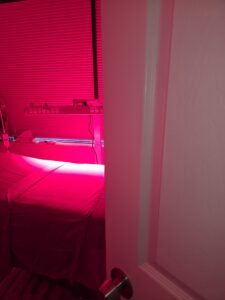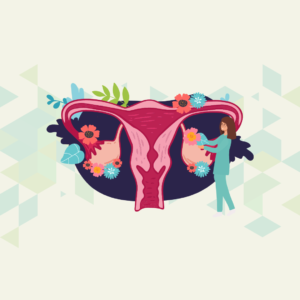A Comprehensive Guide to Using Acupuncture for Headache Relief
Headaches, a pervasive and often debilitating ailment, affect millions worldwide, impacting daily life and well-being. In the realm of holistic healing, acupuncture emerges as a time-honored remedy, offering a unique approach to alleviating headaches. In this comprehensive guide, we delve into the intricacies of acupuncture for headaches, exploring its history, the science behind its efficacy, and the nuanced techniques that make it a sought-after solution. Join us on a journey through the ancient art of acupuncture for headaches and its profound impact on managing and preventing headaches.

Understanding Headaches:
The Ubiquity of Headaches:
Headaches, though common, vary in intensity, duration, and causative factors. From tension headaches and migraines to cluster headaches, the spectrum of headache types underscores the complexity of this condition.
Triggers and Contributors:
Headaches can be triggered by a myriad of factors, including stress, dehydration, hormonal fluctuations, posture, dietary choices, and environmental factors. Understanding the underlying cause is essential for effective management.
The Ancient Wisdom of Acupuncture:
Historical Roots:
Acupuncture, deeply rooted in traditional Chinese medicine (TCM), dates back thousands of years. The practice is based on the concept of Qi, the vital energy that flows through meridians in the body. The balance of Qi is crucial for overall health and well-being.
Acupuncture Points and Meridians:
Acupuncture involves the insertion of thin needles into specific points along meridians, which are energy pathways in the body. These points are carefully chosen based on the individual’s condition and the type of headache they are experiencing.
Acupuncture for Headaches: How It Works:
Balancing Qi:
In the context of headaches, acupuncture aims to balance the flow of Qi and address any disruptions or blockages along the meridians. By doing so, it harmonizes the body’s energy and mitigates the factors contributing to headaches.
Regulating Blood Flow:
Acupuncture has been shown to influence blood flow, promoting vasodilation and improving circulation. This can be particularly beneficial for headaches associated with vascular changes, such as migraines.
Neurotransmitter Modulation:
Research suggests that acupuncture may influence the release of neurotransmitters, including endorphins and serotonin. These natural chemicals play a role in pain modulation and mood regulation, contributing to headache relief.
Stress Reduction:
Acupuncture has a calming effect on the nervous system, helping to reduce stress and tension. Since stress is a common trigger for headaches, the relaxation induced by acupuncture can be instrumental in preventing and alleviating headaches.
Types of Headaches and Acupuncture for Headaches :
Tension Headaches:
Acupuncture is often effective in addressing tension headaches by targeting points associated with muscle tension and stress. The gentle insertion of needles helps relax muscles and promote a sense of calm.
Migraines:
For migraines, acupuncture may focus on specific points related to the head, neck, and certain meridians. This targeted approach aims to reduce the frequency and intensity of migraine attacks.
Cluster Headaches:
While cluster headaches are less studied in the context of acupuncture, some individuals report relief with acupuncture. Points related to pain modulation and overall well-being may be targeted.
The Acupuncture Session: A Symphony of Needles:
Consultation and Assessment:
Before an acupuncture session, a thorough consultation with the acupuncturist is crucial. This involves discussing the individual’s headache history, triggers, and overall health. The acupuncturist may also perform pulse and tongue diagnosis, traditional techniques in TCM.
Needle Insertion Technique:
Acupuncture needles are incredibly thin, and their insertion is generally painless. The acupuncturist strategically places the needles into specific points based on the individual’s diagnosis. The needles may be gently manipulated or left in place for a designated period.
Duration and Frequency:
The duration of an acupuncture session can vary but typically ranges from 30 to 60 minutes. The frequency of sessions depends on the severity and type of headaches, with a common recommendation being weekly sessions initially.
Treatment Plan:
The number of sessions required varies depending on the individual and the severity of the headaches. Acupuncturists often recommend an initial series of sessions followed by maintenance sessions as needed.
Post-Treatment:
After the session, some people experience immediate relief, while others may notice gradual improvements over time. It’s essential to communicate with your acupuncturist about your progress and any changes in your symptoms.
Scientific Evidence and Research:
Clinical Studies:
While the mechanisms of acupuncture are not fully understood, a growing body of research supports its efficacy for headache management. Numerous clinical studies have demonstrated positive outcomes, particularly for migraines and tension headaches.
Placebo Effect:
The placebo effect plays a role in acupuncture’s effectiveness, but research suggests that even when accounting for placebo, acupuncture often outperforms sham treatments. This underscores the therapeutic impact beyond psychological factors.
Self-Care Techniques and Preventive Measures:
Hydration and Nutrition:
Staying hydrated and maintaining balanced nutrition are essential components of headache prevention. Dehydration and certain dietary triggers can contribute to headaches, and addressing these factors can complement acupuncture treatment.
Stress Management:
Incorporating stress management techniques, such as mindfulness, meditation, or yoga, can enhance the effectiveness of acupuncture. Stress reduction is a key aspect of preventing headaches.
Regular Exercise:
Engaging in regular physical activity promotes overall well-being and can contribute to headache prevention. Consult with healthcare professionals before starting any exercise regimen, especially if headaches are chronic.
Summarize (Key Takeaways):
- Acupuncture, rooted in traditional Chinese medicine, offers a holistic approach to managing and preventing headaches.
- The practice involves the insertion of thin needles into specific points along meridians, aiming to balance Qi, regulate blood flow, modulate neurotransmitters, and reduce stress.
- Scientific evidence supports the efficacy of acupuncture for various types of headaches, with positive outcomes reported in clinical studies.
Conclusion:
In the mosaic of headache management, acupuncture stands as a time-honored brushstroke, painting a portrait of relief and holistic well-being. From the ancient wisdom of balancing Qi to the contemporary validation through scientific research, acupuncture offers a unique and profound approach to headache care. As individuals embrace the gentle touch of skilled acupuncturists and integrate self-care practices into their lives, the journey toward headache relief becomes a testament to the enduring efficacy of this ancient healing art.
Harmonize your headspace—acupuncture, an ancient symphony of needles, orchestrates relief for headaches, balancing energy, improving circulation, and offering a timeless path to well-being.




